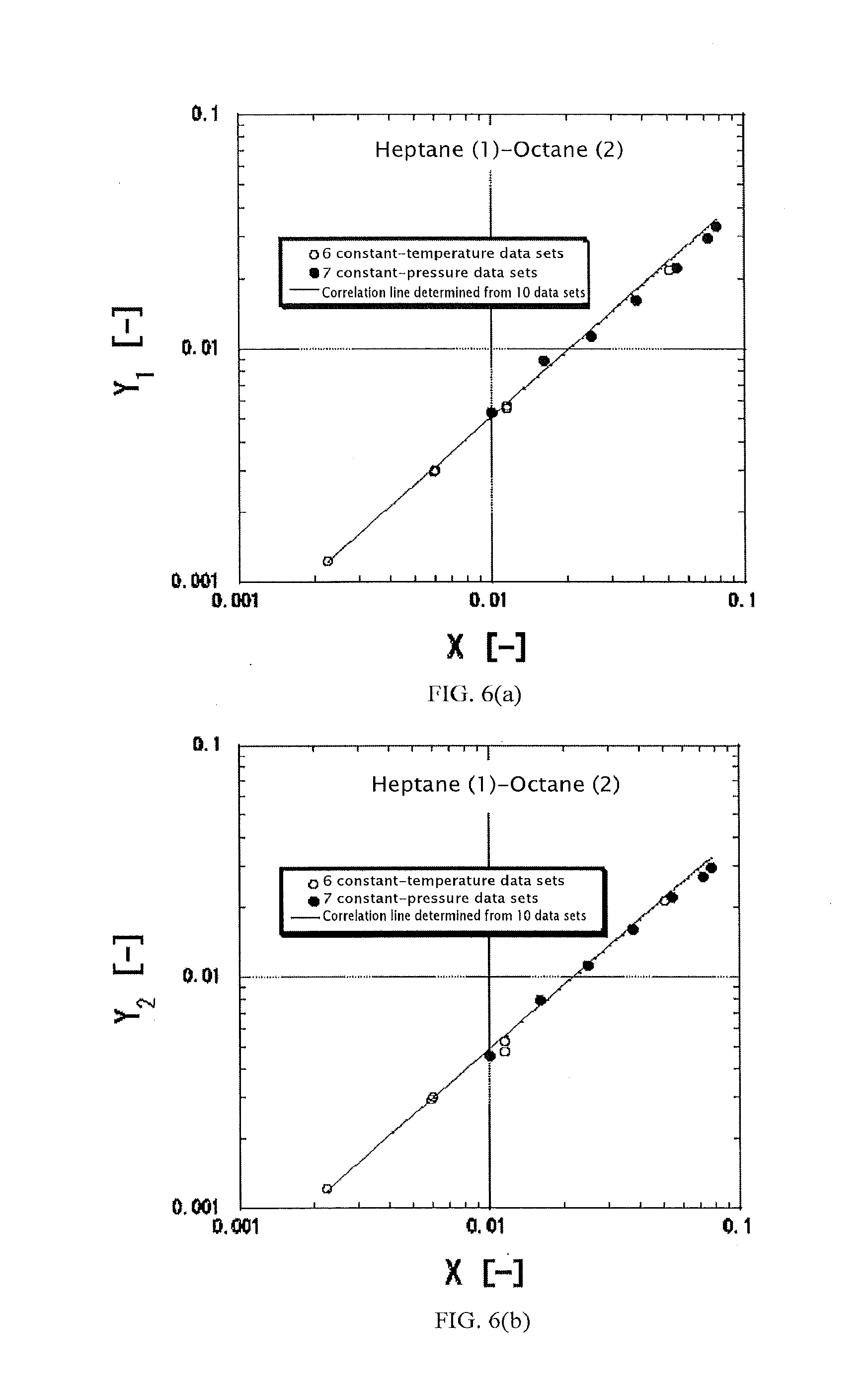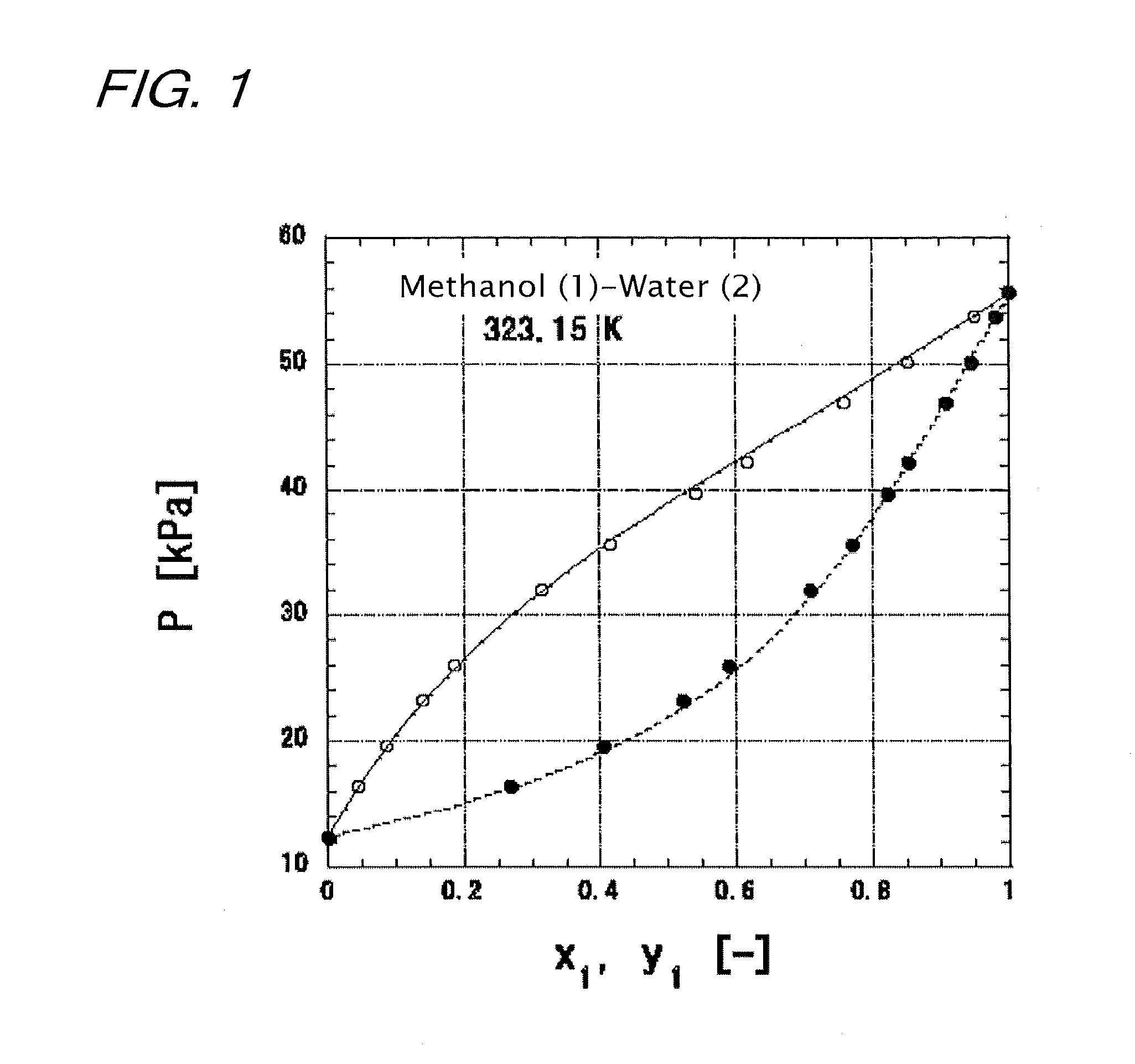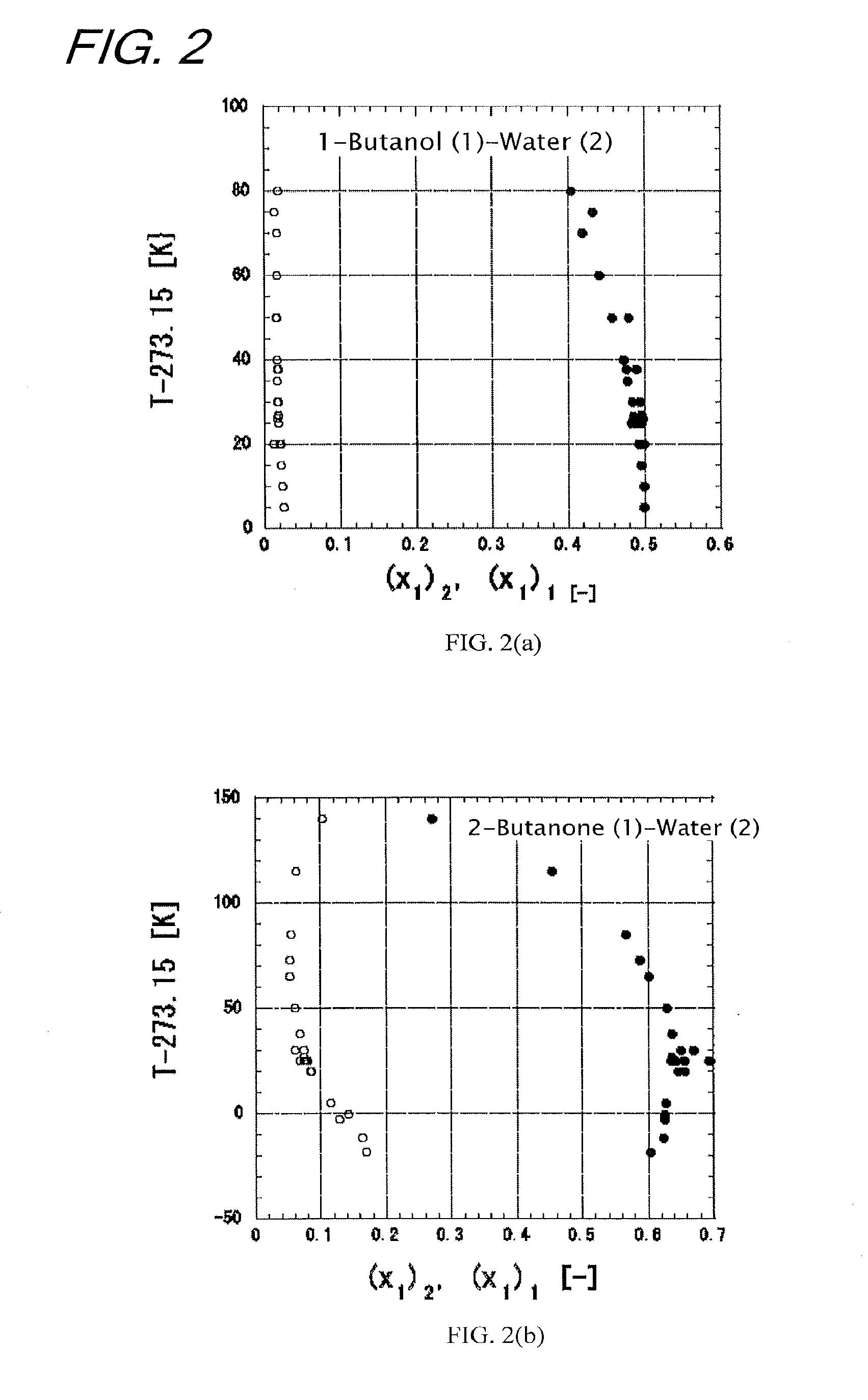Highly accurate correlating method for phase equilibrium data, and phase equilibrium calculation method
a phase equilibrium and calculation method technology, applied in the direction of crystallization regulation/control, separation processes, instruments, etc., can solve the problems of inability to perform rational apparatus or operational design or process step selection, inability to accurately predict the phase equilibrium relationship, unpredictable intermolecular interaction strength and molecular orientation of non-ideal solutions, etc., to achieve high-precision correlation of phase equilibrium data, high accuracy, and low cost
- Summary
- Abstract
- Description
- Claims
- Application Information
AI Technical Summary
Benefits of technology
Problems solved by technology
Method used
Image
Examples
example 1
Calculation of Equilibrium Stages in Distillation Column According to McCabe-Thiele Method
[0172]The case is assumed where a 50 mol % methanol (1)-water (2) mixed solution is supplied as a boiling solution to a plate column at 101.3 kPa, and 95% concentrates are obtained from the top of the column while 5% bottoms are obtained from the bottom of the column. The reflux ratio is set to 3. The vapor-liquid equilibrium of the methanol (1)-water (2) system at 101.3 kPa is determined according to the present invention, and x-y relationships are given by the solid line of FIG. 16. The x-y relationships are determined from two representative lines drawn in FIG. 5(b). The specific calculation method thereof is as follows: first, the boiling points of methanol and water at 101.3 kPa are calculated to determine an average boiling point. X at this average boiling point is calculated according to the equation (22). Next, the values of Y1 and Y2 are determined from the value of X according to the ...
example 2
Application of Atomic Group Contribution Method
[0174]Existing group contribution methods such as the UNIFAC or ASOG method determine group parameters without excluding errors from measurement data, whereas the atomic group contribution method according to the present invention is characterized by exceedingly high accuracy in application because the method uses a highly accurate method for correlation of infinite dilution activity coefficients to exclude measurement errors. In the application of the contribution method, data correlated with high accuracy by excluding measurement errors may also be analyzed in the same manner as a conventional method such as the UNIFAC or ASOG method to determine group parameters. Alternatively, a method of determining the atomic group contribution to nondimensional infinite dilution excess partial molar free energies, ln γ1∞ and ln γ2∞, may be used. Based on the system of alkanol (1)+water (2), an example of the application of the atomic group contri...
PUM
 Login to View More
Login to View More Abstract
Description
Claims
Application Information
 Login to View More
Login to View More - R&D
- Intellectual Property
- Life Sciences
- Materials
- Tech Scout
- Unparalleled Data Quality
- Higher Quality Content
- 60% Fewer Hallucinations
Browse by: Latest US Patents, China's latest patents, Technical Efficacy Thesaurus, Application Domain, Technology Topic, Popular Technical Reports.
© 2025 PatSnap. All rights reserved.Legal|Privacy policy|Modern Slavery Act Transparency Statement|Sitemap|About US| Contact US: help@patsnap.com



